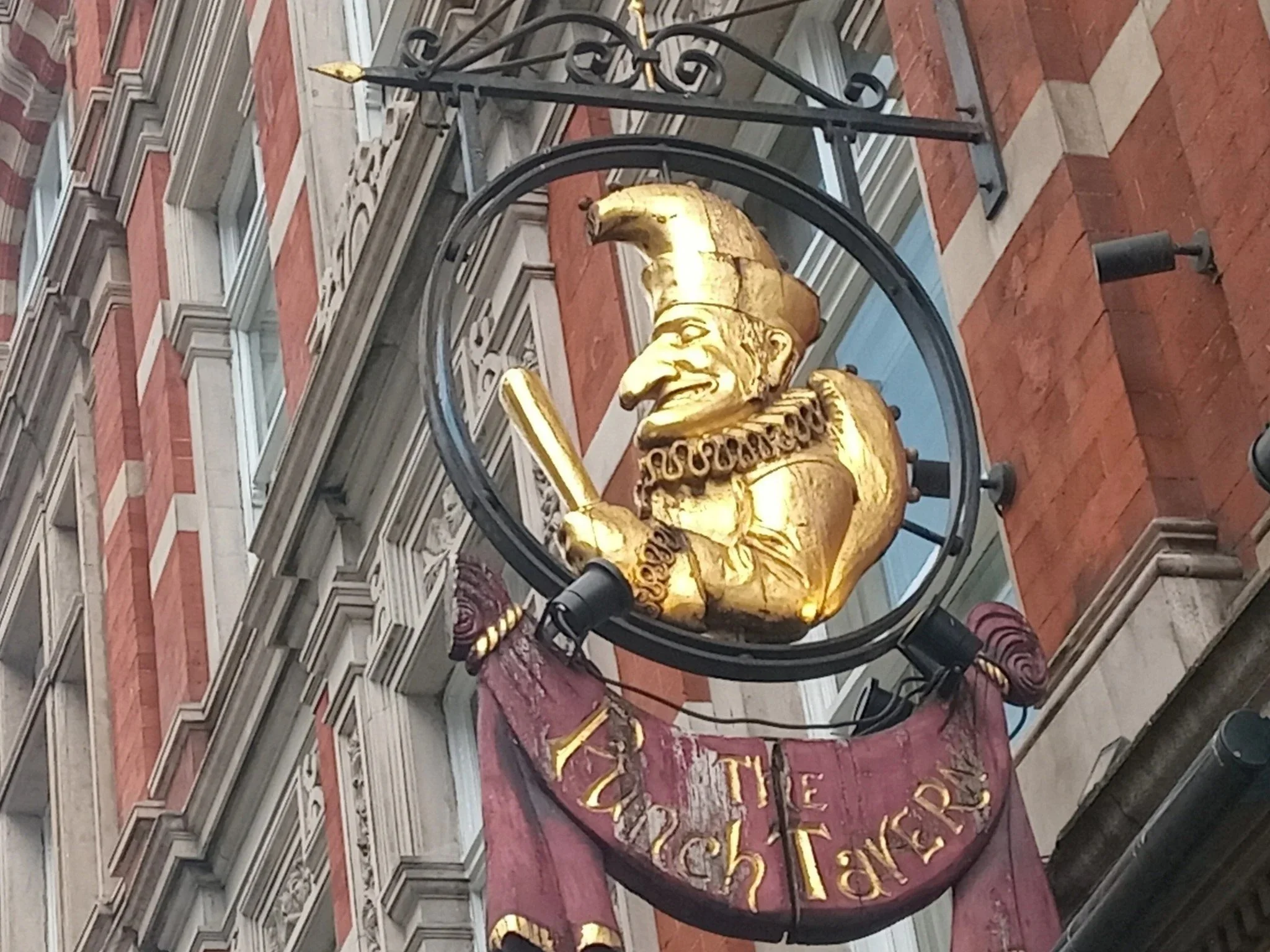Walking Tour - The Devil to the Old King: Pubs on and around Fleet Street
Fleet Street is one of London’s most famous thoroughfares. And it contains some of London’s most legendary pubs. They have served as the watering holes of journalists, lawyers, tourists, intellectual and artistic types and just ordinary Londoners.
Richard’s tour knits together some of the best pubs in the Fleet Street area (and associated history), bringing you stories of writers (Pepys, Johnson, Dickins, Edgar Wallace), drunken journos, disgraced courtiers and a sadly short-lived crown prince. He shows off some of the finest pub buildings, the sites of great pubs of Fleet Street past and two pubs whose names are not all that they seem - one of which packs quite a punch!
A pub interval stop will be included.
The walk will end at Ludgate Circus, not far to walk to St Paul's, Thameslink and Blackfriars stations.
Bread, Milk, Fish and Gold: Cheapside’s Great Market
Much of Cheapside today looks rather bland but it was virtually flattened in the blitz and retains only a shadow of its former glory.
It runs through the heart of the City of London, and for centuries formed its main economic artery. From the early medieval period, all goods essential to life were sold here, with its side streets famously named for the products they traded in. A much broader, grander avenue back in the day, it morphed into a centre for luxury goods vying with Bond Street and Regent Street. And it’s also been a ceremonial street connecting the way from St Paul’s and Westminster to the Tower of London for royal occasions and the Lord Mayor’s Show.
Richard’s tour explores Cheapside’s commercial history, including signs of its former glory, magnificent processions, stories of apprentice riots, great manufacturers of high-class goods and recent controversial developments.
The Pattern of Human Existence: The City of London’s Livery Companies
We might think of the City of London Livery Companies today as overblown, rich, dining clubs with weird, ancient ceremonials. But for hundreds of years they made the City tick: They regulated and protected trade, provided welfare and retirement services and formed an essential part in the machinery of the City’s government.
Richard’s walk connects together a number of the Companies’ Livery Halls, many of which are fine, protected buildings on sites impacted by fire and bombing. He also shows how they sometimes played a role in national and international politics and managed conflict between Companies leading to riots and death.
Plotting a course to the north of the City, up and down walkways and passed City gardens, we also take in some of the fantastic historic remains of the City’s Roman and medieval wall, fortifications and gates.
A Dreadful Bow of Flame: The Great Fire of London
In September 1666 a great conflagration swept through the City of London. It destroyed over 13,000 houses, making nearly 100,000 homeless. It ripped through the buildings that made the City work: the churches, the Livery Company Halls and the trading centres and truly was an epoch making event in the City’s history.
But in the retelling of the events of those 4 – 5 days of devastation, much myth and muddle has come down to us. Richard’s walk attempts to see through the smoke and unravel the true drama of those days: We start where the fire broke out. We visit some of the great churches and other sites affected as we follow the fire’s course. And look at the roles of some of the great players in the events from Pepys to Mayor Bludworth to James, the Duke of York.
Starting point: Monument Station, outside exit on Fish Hill Street.
The City of London’s Forgotten Transformation
Everyone knows the City of London was almost completely rebuilt and rose again after the Great Fire and that there was massive redevelopment after the devastation of the blitz. But what about the transformation of the second half of the nineteenth century?!:
There was an exodus to newly rising suburbs shrinking the City’s residential population as commuting was enabled by great new transport connections. Broad new thoroughfares were driven through old medieval courts and lanes. A new breed of finance clerks was squeezing out manufacturers. And a re-building boom took on.
Richard’s tour explores these dramatic changes through some fantastic Victorian buildings, plaques and statuary and he explores historic streets and vistas as well as medieval courts and lanes and atmospheric pubs..




